Harrappa
Harappa
is one of the two main cities of Indus civilization. Harrappa was discovered
first hence the Indus civilization was called Harrappan Culture. Harrappa is
located in Punjab province of Pakistan near
Sahiwal city and about 4 - 5 hours journey from Lahore.
Harrappa is situated at about 20 km (12 mi) west of Sahiwal. The
site takes its name from a modern village located near the old course of the
Ravi River, some 5 km (3 mi) southeast of the site.
The site contains the ruins of a Bronze Age fortified city,
which was part of the Cemetery H culture and the Indus Valley Civilization,
centered in Sindh and the Punjab. The city is believed to have had as many as
23,500 people living which can be considered large population for that time.
(2500BC)
For tours of Harrappa & Moen Jo Daro Please
contact us
In 2005 a controversial amusement park scheme at the site was
abandoned when builders unearthed many archaeological artifacts during the early
stages of construction work. A plea from the prominent Pakistani archaeologist
Ahmed Hasan Dani to the Ministry of Culture resulted in a restoration of the
site
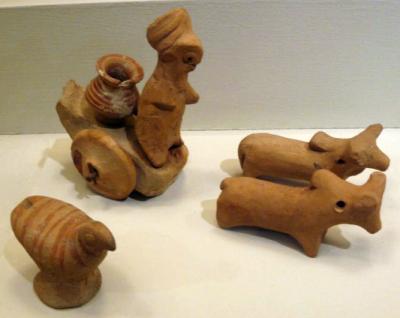 The
Indus Valley Civilization or Harappan Culture has its earliest roots in cultures
such as that of Mehrgarh, approximately 7000 BC & Kot DG & Aamri (3300BC). The
two greatest cities, Mohenjo-daro and Harappa,
emerged circa 2500 BC along the Indus River valley in Punjab and Sindh.
The
Indus Valley Civilization or Harappan Culture has its earliest roots in cultures
such as that of Mehrgarh, approximately 7000 BC & Kot DG & Aamri (3300BC). The
two greatest cities, Mohenjo-daro and Harappa,
emerged circa 2500 BC along the Indus River valley in Punjab and Sindh.
The civilization, with script of its own, urban centers, and
diversified social and economic system, was rediscovered in the 1920s after
excavations at Mohenjo-daro (which means "mound of the dead") in Sindh near
Sukkur, and Harappa, in west Punjab south of Lahore. A number of other sites
stretching from the Himalayan foothills in west Punjab, few sites in India in
the north, to Gujarat in the south and east, and to Balochistan in the west have
also been discovered and studied.
Although the archaeological site at Harappa was partially
damaged in 1857 but the current state of Harrappa is somewhat sadly destructive
Culture and economy of the Indus People
Indus Valley civilization was mainly an urban culture sustained
by surplus agricultural production and commerce, the latter including trade with
Sumer in southern Mesopotamia. Both Mohenjo-daro and Harappa are generally
characterized as having "differentiated living quarters, flat-roofed brick
houses, and fortified administrative or religious centers."[5] Although such
similarities have given rise to arguments for the existence of a standardized
system of urban layout and planning, such similarities are largely due to the
presence of a semi-orthogonal type of civic layout, and a comparison of the
layouts of Mohenjo-daro and Harappa shows that they are in fact, arranged in a
quite dissimilar fashion.
The chert weights and measures of the Indus Valley
Civilization, on the other hand, were highly standardized, and conform to a set
scale of gradations. Distinctive seals were used, among other applications,
perhaps for identification of property and shipment of goods. Although copper
and bronze were in use, iron was not yet employed. "Cotton was woven and dyed
for clothing; wheat, rice, and a variety of vegetables and fruits were
cultivated; and a number of animals, including the humped bull, were
domesticated."
 Wheel-made
pottery?some of it adorned with animal and geometric motifs?has been found in
profusion at all the major Indus sites. A centralized administration for each
city, though not the whole civilization, has been inferred from the revealed
cultural uniformity; however, it remains uncertain whether authority lay with a
commercial oligarchy. There appears to be a complete lack of priestly "pomp or
lavish display" that was common in other civilizations.
Wheel-made
pottery?some of it adorned with animal and geometric motifs?has been found in
profusion at all the major Indus sites. A centralized administration for each
city, though not the whole civilization, has been inferred from the revealed
cultural uniformity; however, it remains uncertain whether authority lay with a
commercial oligarchy. There appears to be a complete lack of priestly "pomp or
lavish display" that was common in other civilizations.
Archaeology
Remains from the final phase of the Harappa occupation: A large
well and bathing platforms
Miniature Votive Images or Toy Models from Harappa, ca. 2500. Hand-modeled
terra-cotta figurines with polychromy. By far the most exquisite but most
obscure artifacts unearthed to date are the small, square steatite seals
engraved with human or animal motifs. Large numbers of the seals have been found
at Mohenjo-daro, many bearing pictographic inscriptions generally thought to be
a kind of Indus script. Despite the efforts of philologists from all parts of
the world, and despite the use of modern cryptographic analysis, the script
remains un-deciphered.
It is also unknown if it reflects proto-Dravidian, proto-Sramanic
(Jain), non-Vedic, or is perhaps related to Brāhmī script. The ascription of
Indus Valley Civilization iconography and epigraphy to historically known
cultures is extremely problematic, in part due to the rather tenuous
archaeological evidence of such claims, as well as the projection of modern
South Asian political concerns onto the archaeological record of the area. This
is especially evident in the radically varying interpretations of Harappan
material culture as seen from both Pakistan and India-based scholars
Harrappa to Lahore : It takes about 4 - 5 hours the drive
is through the fertile planes of Punjab. One can see the life of villages alsong
the road and can also stop at a village to see the sugar can balls being made or
Just for a cup of tea.
Harrappa to Multan Around 4 - 5 hours journey along the
National highway
Tour of Harrappa & Sahiwal from Lahore.
This tour can be taken from Lahore. We leave early morning for
Harrappa on arrival at Harrappa we visit the archeological site and museum in
detail. We will visit the harrappa ancient construction and also study some of
the objects of household use which people used to use in Harrappa 5000 years
ago. We will later drive to Clock tower Sahiwal and visit the bazaar there and
return to Lahore in the evening. Contact us to book
this tour
Harrappa is
contemporary city to Mohan Jo Daro
Images of Harrappa
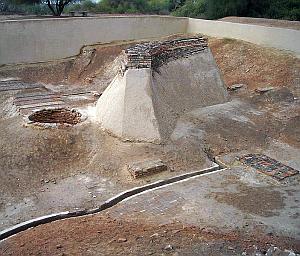
Fortification wall at Harrappa site
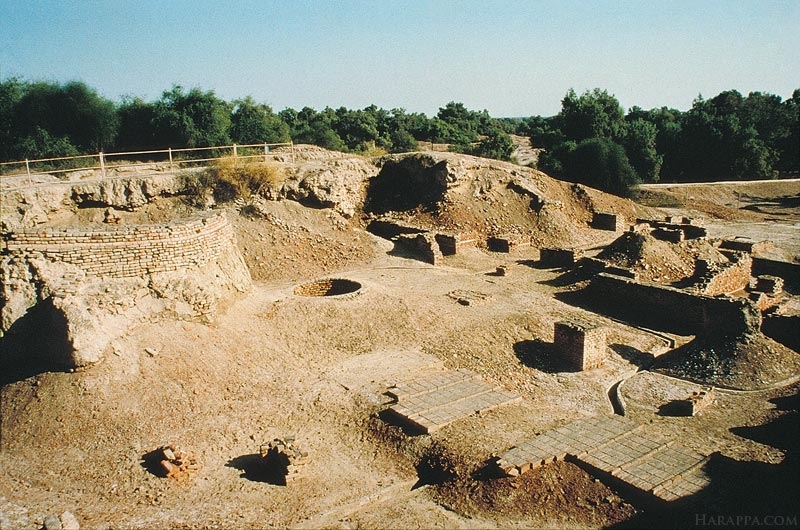
Harrappa Citadal the Later period 2500 BC
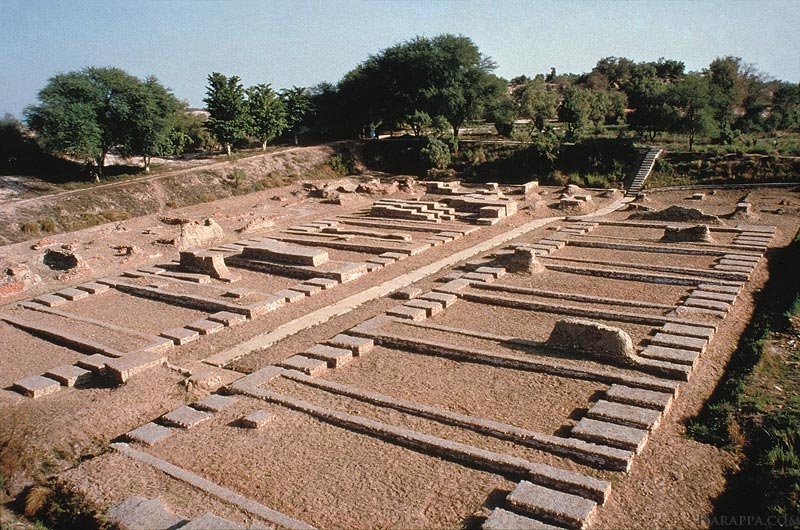
Harrappa Citada
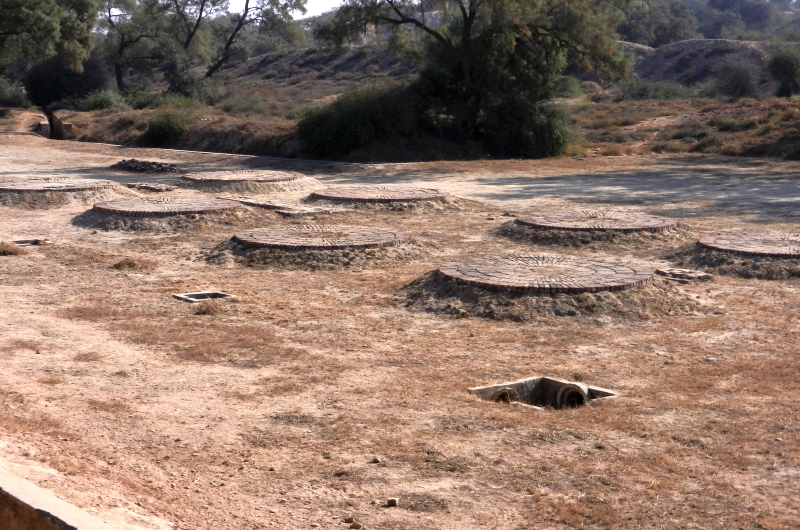
Known as workers platforms this is where workers used to make
and bake pottery
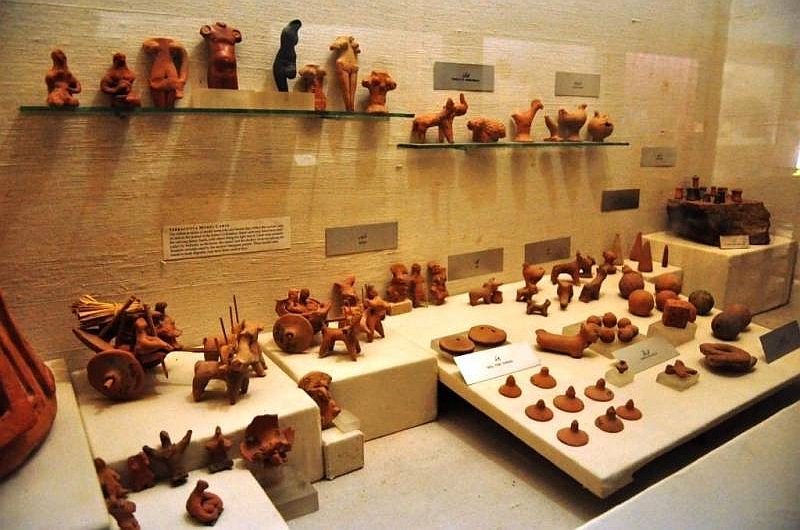
Harrappa Museum showing terracota objects, bulla cart, yoyo,
lids and chess
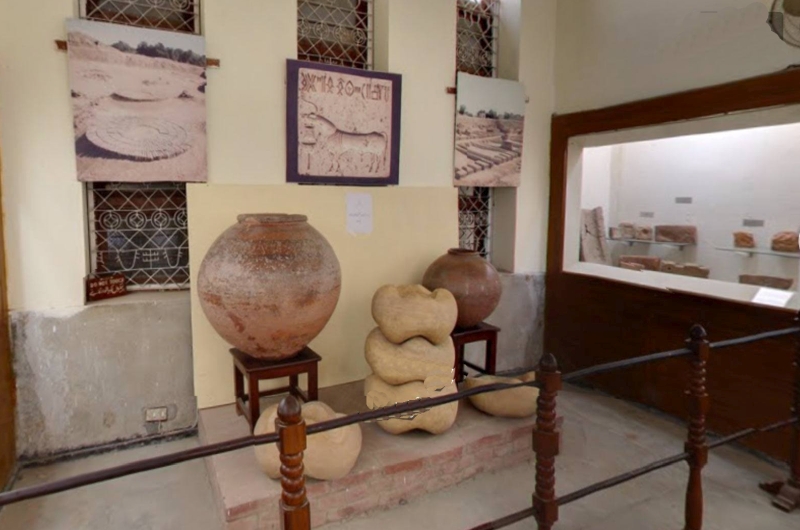
Harrappa museum pots and stone shiva
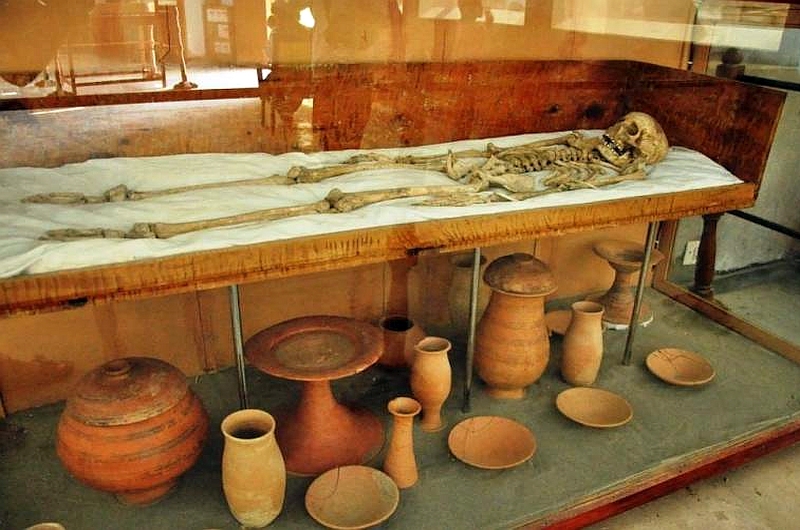
Harrappa Museum pottery found from the graves, above is
skelleton of a woman who has bangles and has an injury as well
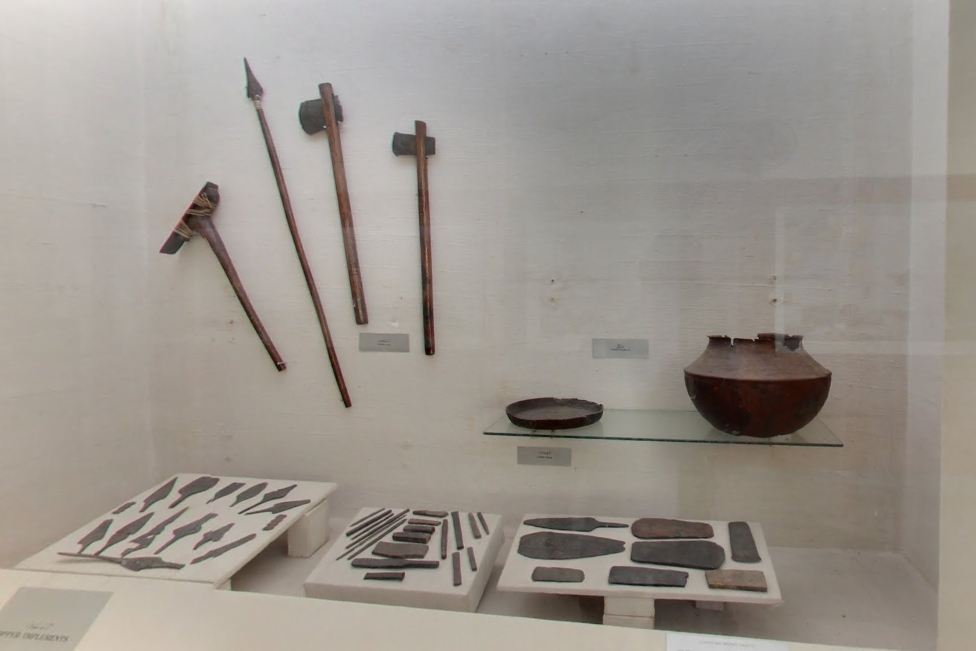
Harrappa Museum Bonze tools, pot and a plate
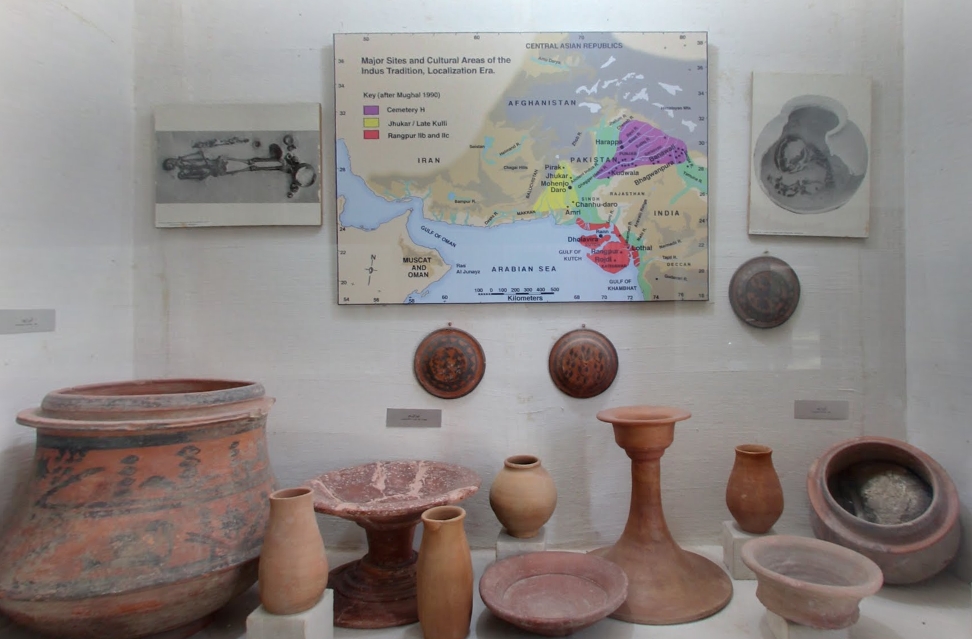
Grave pottery also a pot with a child's body seen
Written & Edited by Jamal Panhwar
Travel & Culture Services Pakistan
220A Panorama center Fatima Jinnah Road Karachi
Email : Click Here To contact
us.
Slide Show - Online Booking
| Home | Pakistan Tours | Conferences & Incentives | Hotels | Islamabad | Karachi | Lahore | Peshawar| Quetta | Multan | Hyderabad | Hunza | Gilgit | Chitral | Swat | Karakorum Highway | History of Pakistan
| Archeology | Weather
| Security | Contact
Information |


Advertise on this site click for advertising rates

